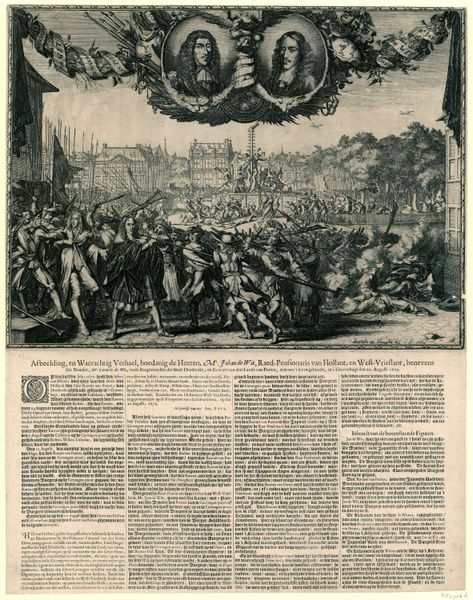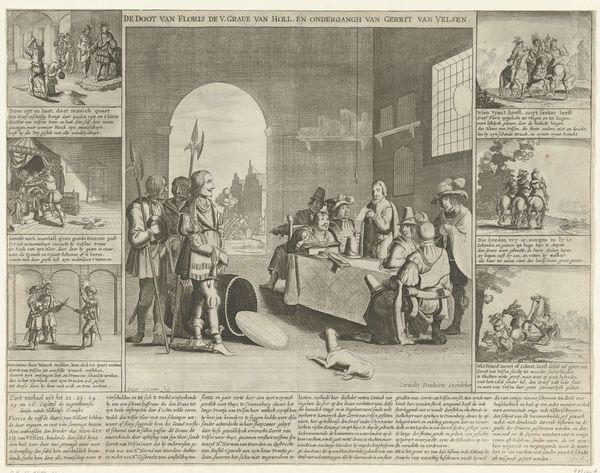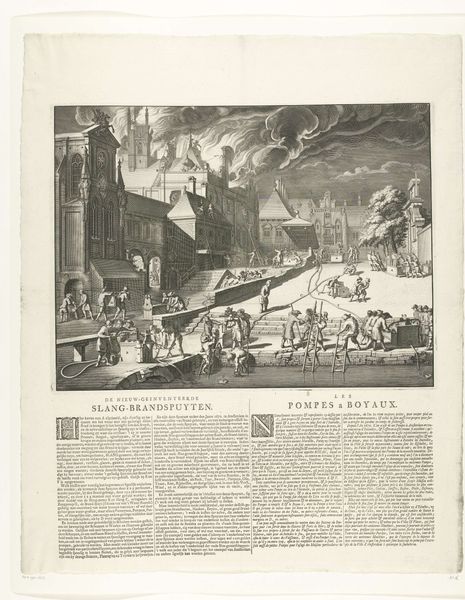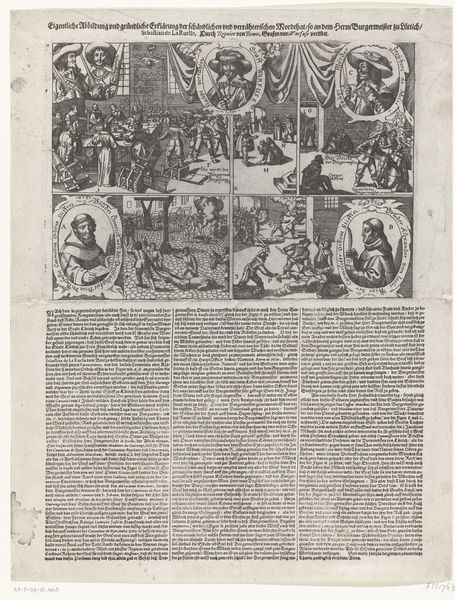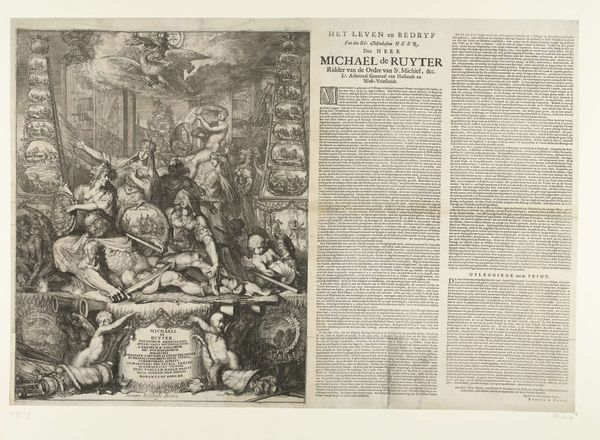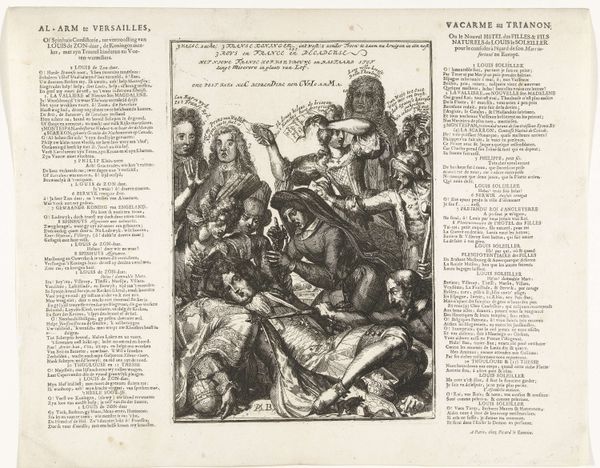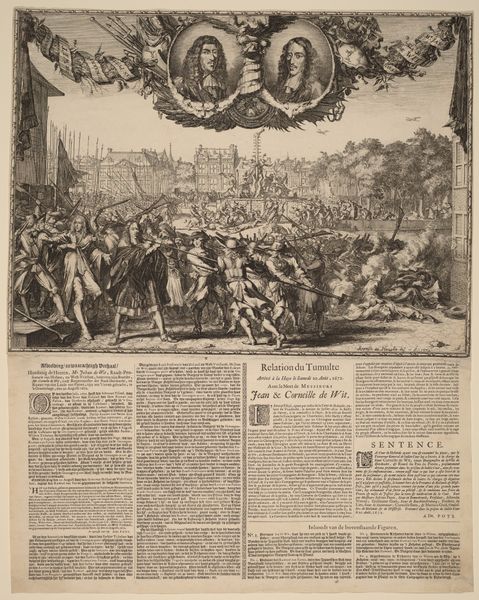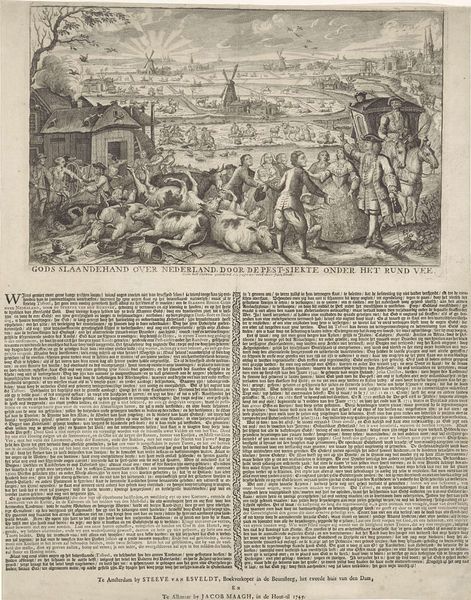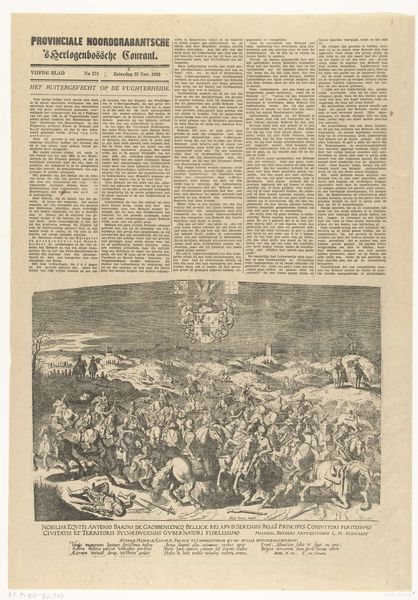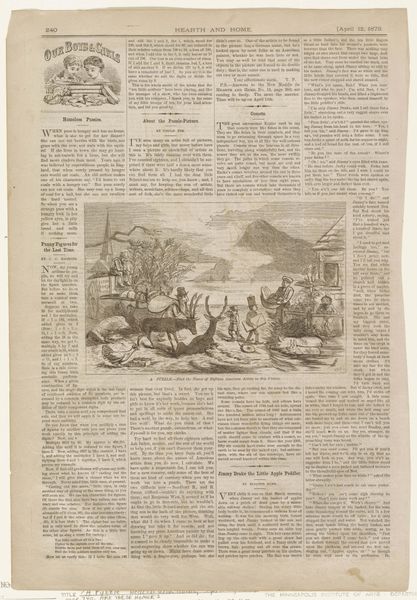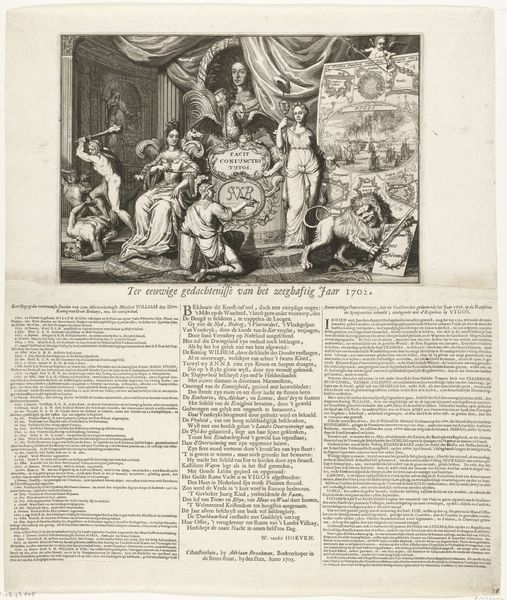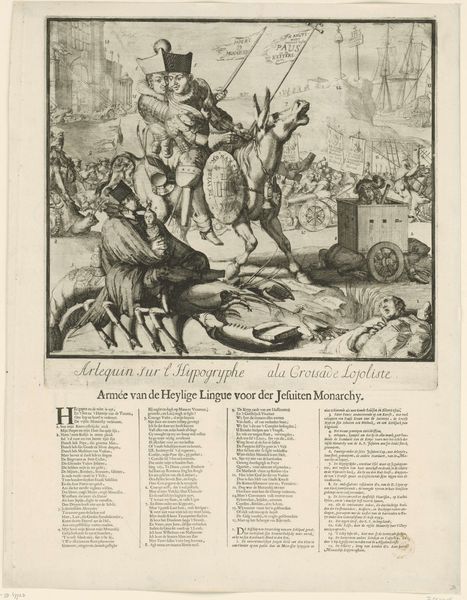
Allegorie op de kroning van Willem en Mary tot koning en koningin van Groot-Brittannië, 1689 1689
0:00
0:00
romeyndehooghe
Rijksmuseum
print, engraving
#
portrait
#
allegory
#
baroque
# print
#
cityscape
#
history-painting
#
engraving
Dimensions: height 520 mm, width 605 mm
Copyright: Rijks Museum: Open Domain
Curator: Here we have a print from 1689 titled "Allegory on the Coronation of William and Mary as King and Queen of Great Britain," made by Romeyn de Hooghe. It resides in the Rijksmuseum. What strikes you when you first look at this piece? Editor: The density of information! It’s quite overwhelming at first glance, like a carefully constructed visual argument. The crisp lines of the engraving create this overwhelming sensation. Curator: Absolutely, it’s teeming with symbolic intent. It’s worth noting this engraving circulated widely at a crucial political moment. William and Mary's ascent to the throne was itself very political. The Glorious Revolution was to guarantee the Protestant succession. This print served as visual propaganda solidifying their reign. Editor: Yes, propaganda is the right word! Focusing on the central figures, William's scepter is echoed and offset in opposition to Mary's slightly downcast eyes, and that tension creates the image's power. I am drawn to how those directional forces play against the detailed rendering of the royal clothing and crowns. There's a delicate balance between promoting wealth and power. Curator: The backdrop too, the suggestion of a city celebrating in the distance, reinforces this feeling of widespread acceptance and legitimacy that William and Mary needed at that moment. Their coronation was heavily influenced by a European need to counter French ambitions in the region. The people depicted celebrate freedom. Editor: Even the choice of engraving, allowing for mass production and dissemination, serves the propagandistic goal. The crisp lines of the text surrounding the central image ground it, and create the reality needed to push an agenda forward. Curator: Indeed. It's fascinating how the artist integrates textual information and visual allegory to build a compelling narrative. So, taking it all in, what would you say is most striking as we conclude our viewing? Editor: I’d have to say the controlled chaos. All of that information—the text, the symbolism, the idealized portraiture—coming together in a complex but ultimately legible statement of power. Curator: A very succinct summary of a print meant to shape an era.
Comments
No comments
Be the first to comment and join the conversation on the ultimate creative platform.
